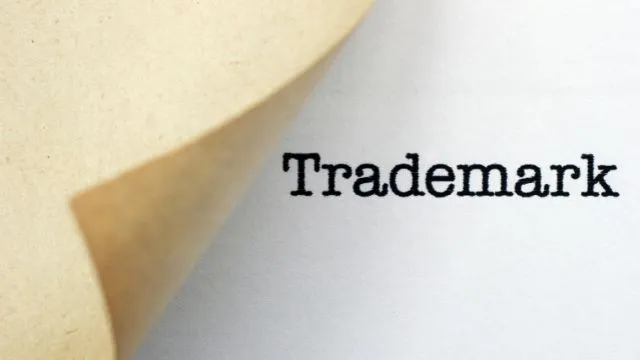Think of a world bustling with business, where everyone’s hustling to stand out from the crowd. Now, in this busy beehive, how could buyers recognize your brand, product, or service? The simple solution is the trademark! Yes, you heard right. It’s like a giant neon sign, letting your customers know, “Hey, it’s us!”. But it’s not just a marker; it’s like a guardian angel for your company’s hard-earned reputation and goodwill. Think of Apple’s bitten apple or Nike’s slick swoosh, these trademarks hold immense power. But if you’re looking to claim this immense power, especially in a place as colorful and packed as India, you’ve got to understand the different types of trademarks in play. And that’s what today’s post is all about. So without further ado, let’s get down to it.
What does a Trademark even mean?
You might have heard this term a lot, but have you ever wondered what it truly means? In simple words, it’s like that unique badge of honor, which could just be a word, a pretty logo, a phrase, some unique sound, or even a combination of specific colors, that makes your brand more recognizable. It’s like the face of your brand in the marketplace.

The magic of having a trademark? Well, it’s like having a force field around your brand. Once you’ve got this badge, it safeguards your brand’s reputation and goodwill like a charm, creating a unique identity in the market. It’s the ultimate brand protector, keeping any sneaky attempts of imitation at bay. And the cherry on top, the law’s got your back!
- Also Read: Different Types of Businesses in India
Types of Trademarks in India
Here is the breakdown of each type of trademark in India:
1. Product Mark
Imagine this: You’re walking through a tech store, and you see a sleek device with an apple logo, not just any apple, mind you, but an apple with a bite taken out of it. Before you even look at the product’s features, you instantly recognize it as an Apple Inc. product, be it a smartphone, a laptop, or a smartwatch. That, my friend, is the magic of a product mark!
Product marks are like shining knights in branding armor. They are used to distinguish the goods of one business from another. Think of them as the unique name tags that tell you who made that specific product. It’s all about identity and standing out, allowing your business to protect its reputation and goodwill. They essentially shout, “Hey, this cool product? Yeah, we are the ones who made it!”
- Also Read: How To Identify Fake Companies In India
2. Service Mark
Now, let’s switch gears to service marks, which are, in a nutshell, the siblings of product marks, except they’re associated with services rather than physical products. Imagine you’re looking for a good movie or TV series to binge-watch on a weekend. You turn on your device, and there it is the “Netflix” logo. Without a second thought, you understand that it signifies a service that provides you with a smorgasbord of online streaming options. That’s your service mark at work.
Service marks play a crucial role in service-based businesses where there are no physical goods traded under the trademark. They are the tell-tale signs indicating the source of a service, ensuring it stands out from the crowd. It’s like having a spotlight in a world of services, making sure customers can distinguish your offerings from those of other businesses.
3. Collective Mark
Now, let’s turn to collective marks, a slightly different breed. These are used not by single businesses, but by a group or association of companies. Essentially, they are the “team logos” in the business world, signifying a collective identity. The fascinating thing about collective marks is that they hint at particular characteristics of products or services that are specific to the companies within the group. They’re often used by associations, cooperatives, or public institutions to signify quality, origin, or other common features.
Take, for example, the “CA” logo used by the Institute of Chartered Accountants of India. It’s not just a simple logo; it stands as a beacon, representing the professional services provided by the members of this prestigious organization. In essence, it’s a statement of assurance and quality, distinguishing the services of its members from others in the accounting and financial field.
4. Certification Mark
Imagine you’re out shopping and you want to buy a product that’s really good quality, safe to use, and just generally up to snuff. That’s where a certification mark comes into play. This kind of mark acts like a seal of approval, showing that a certain product or service has ticked all the boxes in terms of quality, material, origin, and other elements that the mark owner thinks are important.
It’s basically a guarantee for consumers like you and me that a product or service is up to certain standards, including safety standards. And, guess what, we see these marks all the time! Take the “ISI” mark in India, for example. If you spot this on a product, it means the product has been given the thumbs up by the Bureau of Indian Standards. It’s like a gold star for doing a good job.
5. Shape Mark
Picture this, you’re standing in front of a cooler packed with soda bottles, all wrapped in plain white labels. Bet you can still spot a Coca-Cola, right? That’s because its distinctive bottle shape is a dead giveaway, labels or no labels. What it boils down to is that a shape mark is your product’s unique fashion statement. It’s like your product walking down a runway in a designer outfit, making heads turn in a crowd. If your product has a unique shape that adds a bit of drama to its presence, making it pop amidst a sea of products, it’s eligible for a shape mark. In India, to be specific, if your product has that special something in terms of its shape, it can be crowned with a shape mark under the Indian Trademarks Act of 1999. Now that’s what you call standing out in style!
6. Pattern Mark
Ever noticed that repeating design or pattern that you immediately associate with a particular brand? That’s a pattern mark! It’s like a visual rhythm that’s capable of distinguishing goods or services of one brand from another. The cool part? If a pattern mark gets enough love and recognition from the public, it can be registered as a trademark, adding a power punch to the brand identity. Think of Louis Vuitton and its iconic monogram pattern, it’s practically a fashion language in itself, right? This repeating design has successfully marked its territory in the world of luxury fashion, becoming a beacon of recognition for the brand.
7. Sound Mark
Now, let’s shift our focus from eyes to ears. You know those unique sounds or jingles in commercials that stick in your head, and before you know it, you’re humming along? That’s a sound mark in action, my friend! It’s a particular sound that’s used to uniquely identify a product or a service. Sound marks are like the theme song of a brand, they give the brand its own voice in the busy marketplace, making it stand out from the crowd. Like the Airtel TV commercial sound that immediately lets you know it’s an Airtel advertisement.
Conclusion
All in all, a trademark isn’t just a fancy name or pretty logo, it’s your company’s identity card and reputation all wrapped up in a neat little package. Navigating the sea of trademarks in the rich and vibrant Indian market might seem like a mammoth task, but a good understanding of the various trademark types can help you like a compass.














